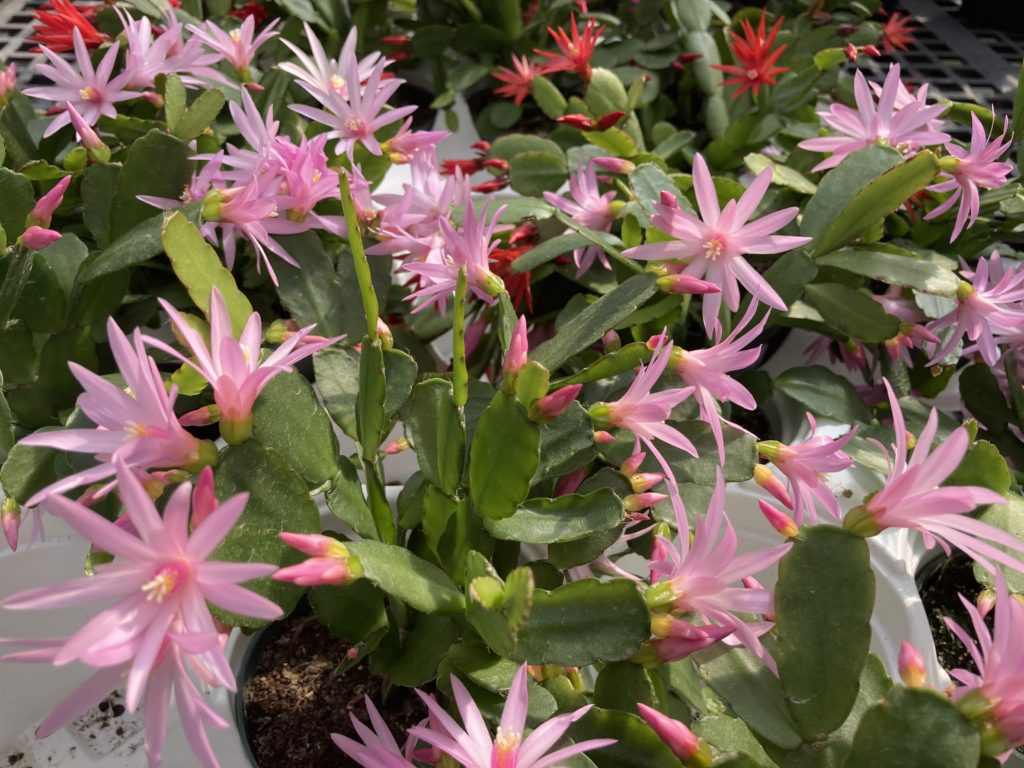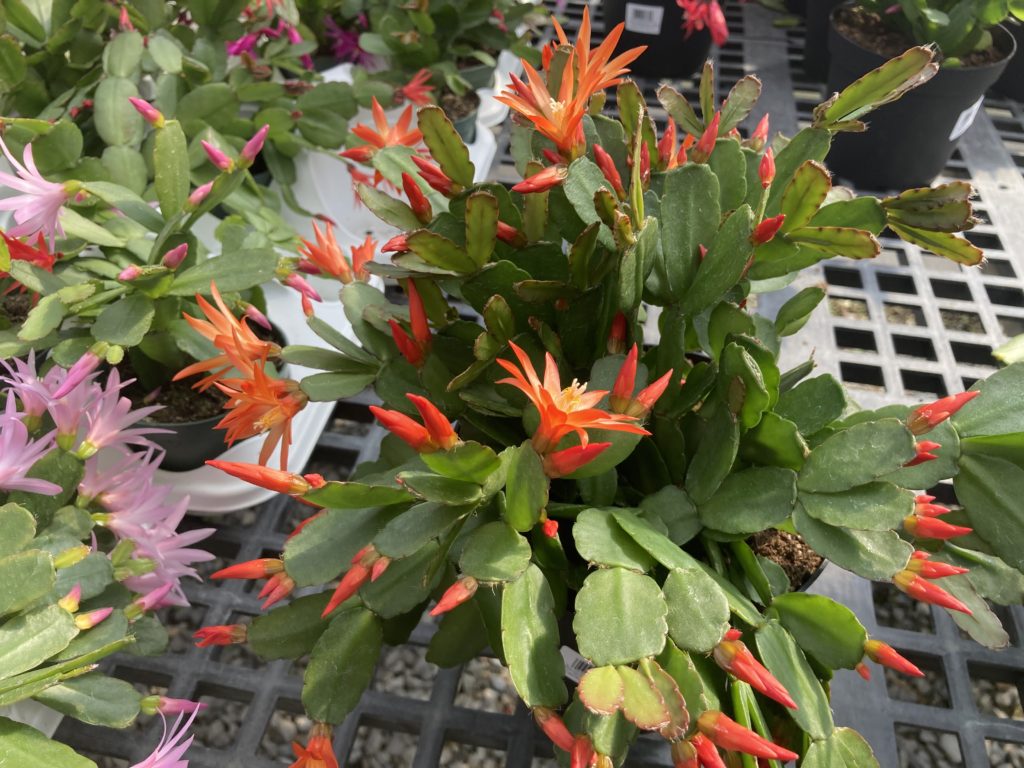
A native of southeastern Brazil, Easter cactus (Schlumbergeri gaertneri), formerly Hatiora gaertneri, is a tropical succulent cactus. It is often confused with Thanksgiving (Schlumbergera truncata) and Christmas Cacti (S. x buckeyi) both of which have very difference flattened stems with rounded or spiney-edged scalloped foliage. In the wild, this tropical grows almost shrub-like on trees or rocks.
Easter cactus may be identified for its single, squat stem. From this, elongated leaf segments grow. Unlike other holiday cacti, the Easter form has no scallops or teeth on a healthy leaf. Foliage color darkens as they age, beginning life as pale green and grow wider and flatter with age, with fully grown segments measuring 1.5 – 3 inches and up to 1 inch wide. When fully grown, segments will arch downward under their own weight.
Easter Cactus is an epiphytic house plant that asks for light shade and well-drained soil. The plant tolerates dry soils and overly wet potting media will cause root rot. Indoors, Easter cacti prefer a bright East-facing window, one not in direct sunlight. Plants prefer high humidity; mist every 2-3 days and set the pot in a tray of moist pebbles.
Flower buds start to set up in February-March as photoperiodic daylengths get longer. Flower buds form on the end of branches and open between late March and May. Bright starburst shaped flowers are available in scarlet red, light lavender and pink hues, depending on variety. These large blooms typically measure 3-inches across, with yellow stamen in center. Flowers that have been pollinated may produce oblong red fruit bearing seeds.

After flowering, Easter cactus enters a one-month resting period when water amounts are reduced. You may move the plant outdoors to a shady spot under a tree over most of spring and through the summer months. Treat the plant as you do most succulents in your house plant collection; water every 5-7 days and fertilize bi-monthly with a water-soluble product such as Miracle-Gro®, Jacks®, or Schultz® House Plant Food. In early January initiate flowering in early spring, set the plant, move the plant to cool room: 50-65°F during the day and night. Each night, set the plant in 14 hours of darkness daily by covering the plant with a box or moving it to a closet.
From late October through February, do not fertilize during its winter resting period. Never re-pot during bloom or immediately following resting period. Re-pot by removing only the loose soil around the roots. Transfer to a slightly larger pot and add potting mix. The best soil blend for Easter cacti contains about 50% peat/perlite potting, 25% garden soil, and 25% bark chips or gritty sand.

 Posted in
Posted in 
